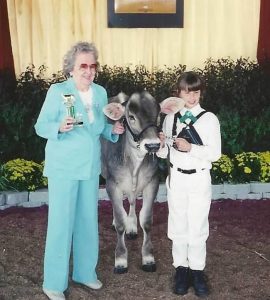In early May, the Alliance hosted its 2023 Stakeholders Summit themed “Partners in Progress: Building a Sustainable Future for Animal Ag.” The annual Summit is a one-of-a-kind conference which attracted a diverse crowd of almost 320 decision makers, including...

Did you miss part 1 of our “Partnering for a Sustainable Future” blog series? Check it out here before continuing!
Communication is Key

In the “Partners Around the Plate: Shifting the Conversation About Food” session, Food Bullying podcast hosts Michele Payn, CSP, and Nicole Rodriguez, RDN, led attendees through an interactive discussion that provided them with practical ideas to engage consumers in conversations about food and farming that are both meaningful and productive. The session helped attendees discover how meeting people where they are can drive conversations and engage consumers in a more impactful way and understand ways to capitalize on farmers and dietitians as trusted sources of information when it comes to food and farming.
“I think a lot of times it’s not about changing minds… but having the opportunity to offer information so that everyone can make the best choice.” – Rodriguez

On the topic of communication, another panel discussion held at this year’s Summit was about how to engage with consumers in different age groups on the topic of animal agriculture. Moderated by The Partnership’s Amanda Lucey, “Engaging with Consumers: From A to ‘Gen Z’” featured Roxi Beck with The Center for Food Integrity, Emily DeSousa of Seaside with Emily, and Cassidy Johnston with Not Your Average Rancher. This session explored how to engage “Gen Z” and other groups effectively based on both research and personal experience.
“People want to understand science, and they want to feel like they are a part of something, and they don’t want to feel like they’re being spoken at. They want to be spoken to.” – DeSousa stated during the session.
Joe Proudman, associate director for communications at UC Davis, followed with his session, “Speaking Bullishly: How to Talk About Animal Ag’s Path Forward.” Proudman’s presentation focused on how members of the animal agriculture community can build content across platforms and use multiple techniques to share science-based and nuanced information, push back against misinformation, and confront extremist tactics that sometimes dominate the headlines.
Safeguarding the Future

Summit attendees heard from Jim Newman with Americans for Medical Progress, Jason Roesler, an independent security consultant, and Andrea Bertaglio with European Livestock Voice in their session titled, “Practical Solutions: Responding to Animal Rights Extremism in 2023.” They shared the latest trends in the animal rights movement as well as relevant, practical takeaways for attendees to protect themselves and their livelihood from extremists. This included proactive recommendations like having prepared crisis teams, continued lobbying efforts, developing partnerships across the industry and academia, and media outreach.
In the “Safeguarding the Future: Legal and Legislative Issues” session, we heard from Emily Lyons of Husch Blackwell LLP and Mike Bober, president and CEO of the Pet Advocacy Network, who shared hot legal and legislative issues including lessons learned from false advertising litigation and how to organize a tactical plan targeting a government relations goal. Attendees were encouraged to practice “the four Fs” for effective constituent communications:
Face – legislators need to know and see your face. Facts – legislators need it to back up claims or they don’t have a leg to stand on. Focus – legislators want to talk about a lot of things in a short meeting timeframe. Follow-up – distinguishes a “what can you do for me meeting” from building a credible relationship.
Robert Mensies and Brent Smith of Public TrustWorks hosted an interactive workshop, “Growing Trust and Protecting Futures: Building Your Public Trust Communications Strategy,” which guided attendees in developing their public trust communications strategy. Mensies and Smith shared that public trust can be earned by doing the right thing, through assurance, and verification. Communicating these commitments and tackling the communications component is key during any type of crisis situation, according to presenters.
Our 2023 Stakeholder Summit wrapped up with a session titled “Factory Fundraisers: How Animal Rights Groups Exploit Animals and Donors,” presented by Jack Hubbard of Berman. In this session Hubbard shared that a growing number of animal rights extremist groups are driving legislation, attacking brands, and pushing negative news stories, among other tactics to garner support for their causes. Hubbard shared the true intentions and strategies behind extremist groups and how we can safeguard our future with messages and tactics proven to diminish their exploitation of animals and donors.

“You need to understand that offense wins and defense loses in public relations and in advocacy. If you are explaining, you’re losing. If you are answering accusations, you are losing. If you are having their debate and saying, ‘I’m not that bad,’ they are controlling the narrative.” – Hubbard
The 2023 Stakeholder Summit provided incredible opportunities to partner with stakeholders throughout the food chain and across commodities, but the work does not stop there. We’re stronger together, and new and continued partnerships across the supply chain are necessary to continue building a sustainable future for animal agriculture.
To see more insights and quotes from the 2023 Summit, check out our highlights report! Save the date for the 2024 Summit, slated for May 8-9 in Kansas City, Missouri! Stay tuned to #AAA23 for updates.
The post Partnering for a Sustainable Future: Part 2 appeared first on Animal Agriculture Alliance.









